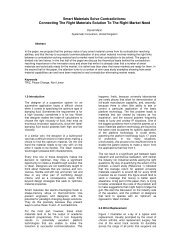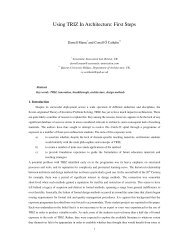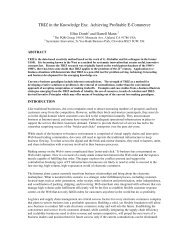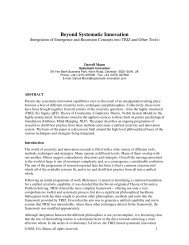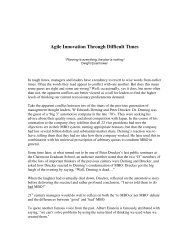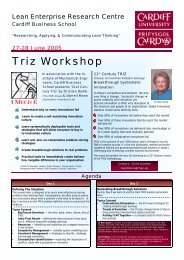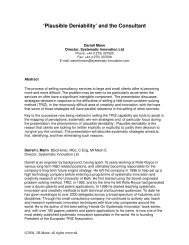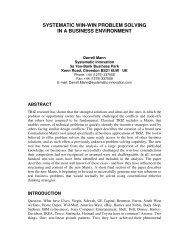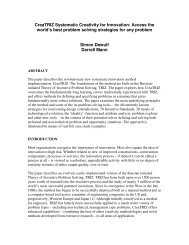TRIZ-Based Root Cause Failure Analysis For Hydraulic Systems
TRIZ-Based Root Cause Failure Analysis For Hydraulic Systems
TRIZ-Based Root Cause Failure Analysis For Hydraulic Systems
You also want an ePaper? Increase the reach of your titles
YUMPU automatically turns print PDFs into web optimized ePapers that Google loves.
Figure 4 – Load versus Strength –Ideal Design State<br />
The <strong>TRIZ</strong> root-cause compromise-elimination approach allows designers to<br />
escape from the traditional design strategy i.e., balancing different parameters (Figure 5).<br />
bad<br />
Parameter<br />
B<br />
Traditional Design<br />
Strategy<br />
good<br />
good<br />
<strong>TRIZ</strong><br />
Parameter A<br />
bad<br />
Figure 5 – Traditional v <strong>TRIZ</strong>-based Approach to <strong>Root</strong>-<strong>Cause</strong> Design Contradictions<br />
The inclined flange face idea of Figure 3 is one such idea where the traditional<br />
coupling design paradigm may be modified in order to achieve good leakage performance<br />
and a low weight, low cost solution. The same contradiction-elimination perspective may<br />
also yield other significant root-cause problem solutions in other aspects of fluid power<br />
system design for true leak-free performance.<br />
Case Study 2: Filters<br />
A common starting point in <strong>TRIZ</strong> thinking is to look at the compromises and<br />
trade-offs present in the state of the art. In the case of filtration systems, those trade-offs<br />
include:-



